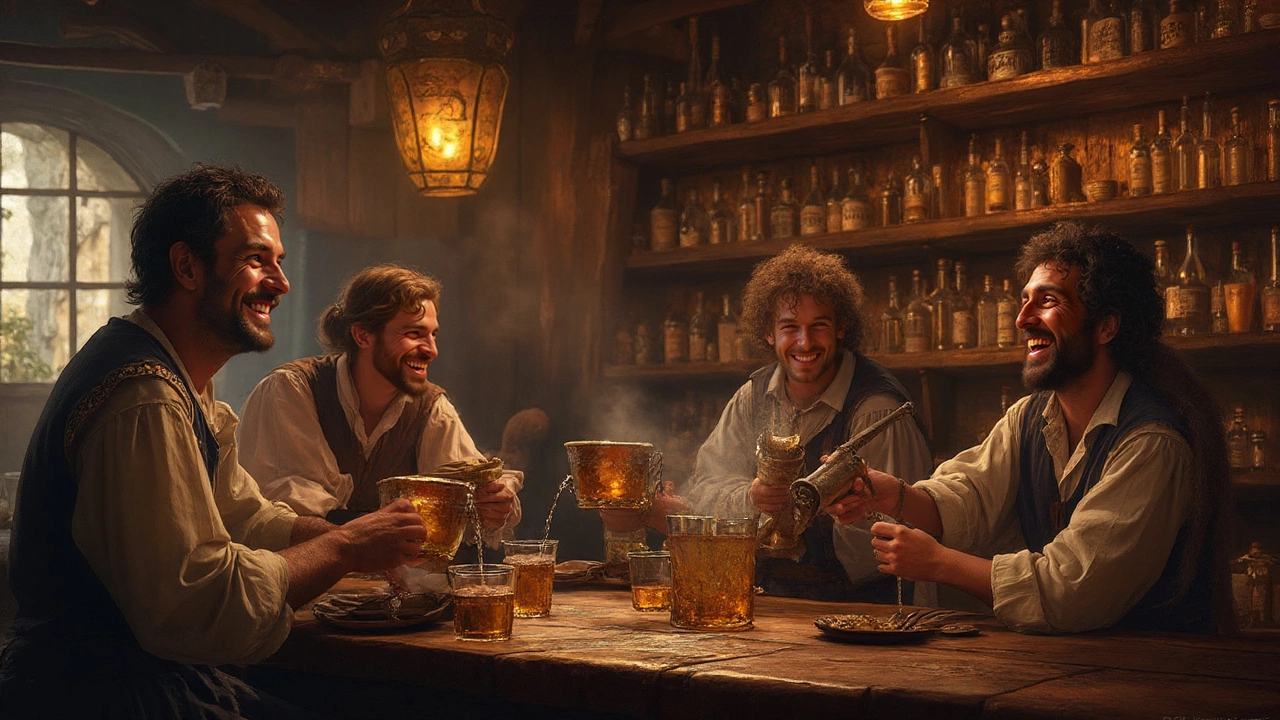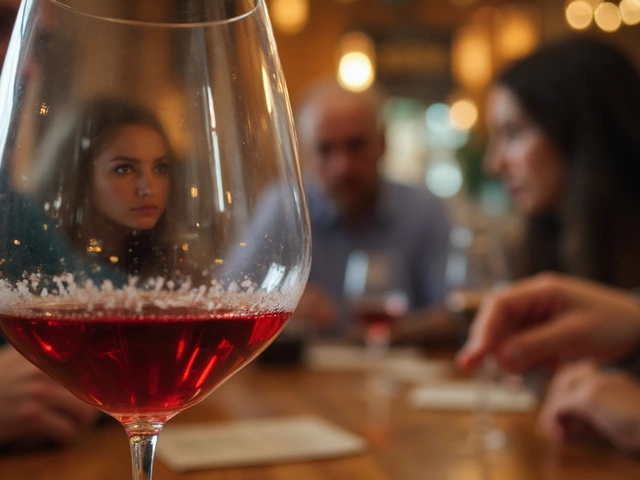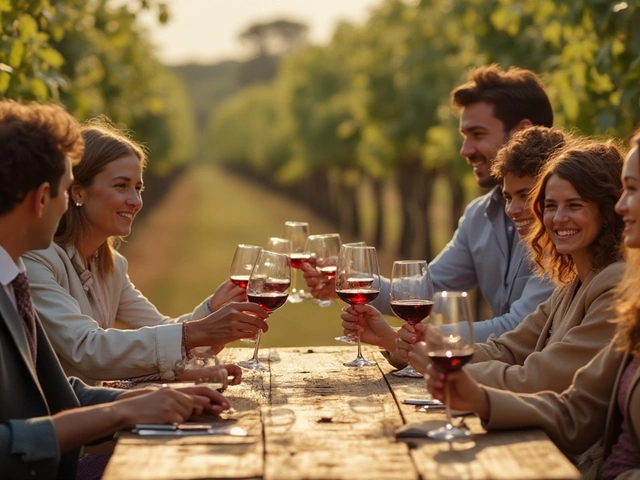For thousands of years, people have chased that peculiar fire in a glass. It's almost primal—the drive to distill, to squeeze a spark of magic from grains and grapes, something more potent than beer or wine. Chasing the answer to "what is the oldest spirit drink?" is a bit like following a faint trail across the desert with only shards of ancient pottery and smoky stories from another age to guide you. Imagine, before whiskey tastings and neat pours, before "handcrafted artisanal" became a tired phrase, before even the word "spirit" picked up its modern meaning, people uncovered powerful liquids both feared and worshipped by their societies. Let's uncover where that intoxicating journey began.
The Origins of Distillation: When Did Humans Start Making Spirits?
Distillation didn’t pop up overnight, and it definitely wasn’t invented by accident like some might hope. The process itself—separating liquids by heat and condensation—goes way back, but not for drinking at first. Ancient Mesopotamians used crude distillation to make perfumes as early as the third millennium BCE. It wasn’t until people realized you could boil a fermented slurry and collect something far stronger that drinking spirits started catching on.
Most stories point to the Middle East, especially the Arab world, around the 8th or 9th century, as the birthplace of alcohol meant for pleasure and medicine. Arabic alchemists, like Jabir ibn Hayyan (aka Geber), were obsessed with unlocking elemental secrets. Their early alembics—the classic bulb and tube apparatus—became the blueprint for spirit creation. By 900 CE, distillation had taken a sharp turn from making rosewater to brewing up highly concentrated alcohol, which got the name "al-kohl" in Arabic (where we get "alcohol").
But if we want to get technical, China may have been another early player. Ancient Chinese texts mention distilled drinks as far back as the Jin and Tang dynasties, but their alcohol content was far lower than today's spirits—likely similar to strong rice wine. India has its own claim with 'arka,' a distilled herbal remedy recorded in Sanskrit medical works around 800 CE. Whether Middle Eastern alchemists or Asian tinkerers beat everyone else to the punch is still up for debate—but those earliest spirit drinks were not for the faint of heart, and were often dosed out as medicine, magic, or religious ritual more than nightly fun.
The First Spirit Drinks: What Did Ancient Spirits Taste Like?
If you think your shot of mezcal packs a punch, the oldest spirit drinks were raw, rough, and almost certainly not smooth sipping. Forget fancy barrel aging—early distillers didn’t let anything rest. Most of the first distilled spirits were colorless, harsh, and potent enough to sting. In the Arab world, "araq"—a clear, anise-flavored liquor—is still around, and some food historians argue it's one of the direct descendants of the first distilled booze. Arak comes from the word for "sweat" (as in "the sweat of the grape"), which paints a vivid mental picture. It was made by double distilling fermented grapes or dates, sometimes with added herbs or spices.
China’s "baijiu" is another contender. Today, it’s a staple at every banquet, but it descends from distillers who worked with whatever grains they could find—mostly sorghum—then cooked up what could best be described as earthy, pungent firewater. The earliest baijiu was strong, funky, and worlds away from gentle, filtered vodka. In India, ancient arka wasn’t just about getting tipsy; it was an infused spirit with everything from cardamom to cannabis blended in, and usually served in tiny doses as medicine.
Meanwhile in Europe, the early distilled drinks show up in monastic settings by the 12th century. Italian and Spanish monks would distill wine into "aqua vitae" ("water of life"), claiming it could cure anything that ailed you. Spoiler: it didn’t, but it helped them forget their worries for a while. Early aqua vitae tasted rougher than today's brandy—think burning hay, with wisps of fruit and a sharp edge that could double as hand sanitizer.

Which Spirit Truly Deserves the Title "Oldest"?
Nailing down the oldest spirit isn’t as simple as pointing toward a single dusty bottle. There’s no "first shot of whiskey" hiding in an ancient crypt. If you want to go by written records, arak and early brandy earn the title in the Middle East and Europe, while China’s proto-baijiu, called "shaojiu," may have been distilled a millennium or two earlier. The term "spirit" itself emerged in medieval Europe, where the "spirit" of wine or mash was separated and collected—hence the name. Some historians believe the first real spirit drink, distilled for humans to drink and not just preserve herbs, came from the Arab world around the 9th century, but modern laboratory analysis of residues sometimes hints at even older roots.
Here’s where it gets wild: residue analysis of ancient pottery in northern China found signs of distilled alcohol as early as the Yuan Dynasty (around 800 years ago), although some claim even earlier discoveries. A study out of Israel’s Tel Aviv University, dating to the Crusader period, found clear signs of grape-based spirits in clay vessels, backing up stories of "strong waters" used by both European knights and local populations as early as the 1100s.
So, while you’ll find ancient rice beer, mead, and wine much older, the first "spirit" as we drink it today seems to come from a tangle of Persian, Arab, and possibly Chinese cultures, all experimenting with fire, glass, and fermentation at roughly the same time. If you’re betting real money, arak (the ancestor of ouzo and raki) and early brandy-like concoctions probably win as the most ancient, still-surviving spirits with an unbroken historical line.
The Evolution of Spirits: How Ancient Drinks Inspired the Booze We Know Today
It’s wild to think that the shot you chase at a bar started out as a heady homemade experiment or a wizard’s medicinal draft. Once news of distilled drinks spread, every culture put its own spin on the idea. In Europe, brandy and "eau de vie" (“water of life” in French) became essential to trade, medicine, and even food preservation—pineapple, for example, was preserved in spirits for royalty. Whisky took off in Ireland and Scotland by the late 1400s, but for ages, it was barely recognizable compared to that neat Speyside single malt in your glass today.
Genever, the ancestor of gin, appeared in the Netherlands in the 16th century—originally a herbal tonic before it turned into trouble for English parliamentarians. True vodka was likely first produced in Russia and Poland, both of whom still argue over bragging rights, but their earliest versions tasted like raw spirit and sometimes even cloudy with residue. Rum’s story starts with sugarcane plantations in the Caribbean in the 1600s, built on the cruel bones of slave labor and thirst for profit. The variety is dizzying: each new region, crop, and era produced a different twist—Japanese shochu, Mexican mezcal, Peruvian pisco, Appalachian moonshine. The history of spirits is the history of humanity pushing boundaries, both literal and legal.
Along the way, technology and clever marketing transformed hooch into luxury. Charcoal filtration made vodka smoother. Copper stills gave rise to mellow, aged whisky. Smart glassmakers kept out nasty flavors, and shrewd distillers found new techniques for clarity, purity, and distinctive flavor. Fast forward, and what started as harsh homebrew has become a global industry worth over a trillion dollars.

Tasting the Past: How to Try Ancient Spirits Today
If the idea of sipping something with a thousand-year-old pedigree sounds romantic, you’re not alone. Specialty distillers and heritage brands all over the globe are bringing old recipes back to life. You can still find traditional arak in Lebanese and Syrian shops, often served with water and fresh mint. The anise kick hasn’t changed for centuries. Genuine baijiu is now a pride of Chinese culture, with different provinces competing for the best methods—try the stronger varieties with robust pickles and richly spiced foods for the closest thing to an ancient feast.
In Europe, artisan distilleries offer up “historic” distillates, using medieval techniques and recipes—sometimes in limited runs, so keep an eye on distillery events in places like France, Scotland, or even Austria. Early-style brandy and eau de vie, especially from small-batch producers, often have a wild, unaged taste, much closer to what the monks would have shared. If you want a true throwback, try to find unaged whiskey or "white dog"—it’s a rough preview of what the drink was like fresh off the still, before barrels turned it golden.
For a home experiment, you can mix up DIY infusions with vodka or unaged grain spirit mimicking arka—toss in honey, cardamom, maybe a sprig of fresh basil and sip in tiny amounts. It’s a nod to both the medicine and the mischief that inspired those ancient drinkers. And if you want to toast the world’s hidden history, pour something unruly, raise your glass, and imagine the fire of the world’s oldest spirit drink still burning as it slips down your throat. Because behind every bottle, there’s a story that’s older and wilder than we can ever drink.


